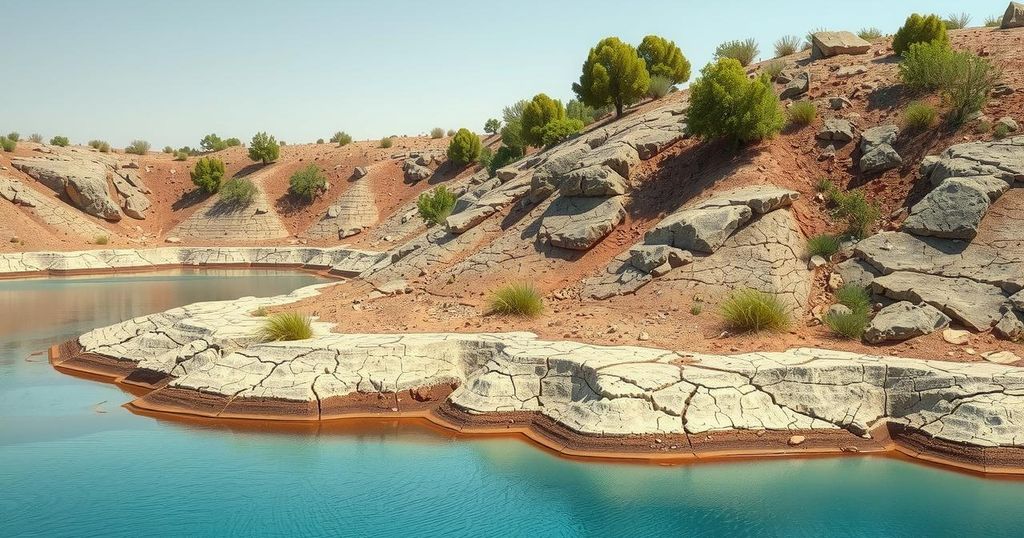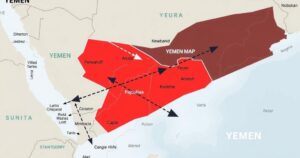Water Dispute Between the US and Mexico Highlights Urgent Shortages

- San Francisco de Conchos is experiencing a severe drought after 30 months without rain.
- The La Boquilla Dam’s water level is critically low, prompting prayers for rain.
- Under a 1944 agreement, Mexico is to send water to the US but is currently in arrears.
- Trump threatened tariffs on Mexico if water obligations are not met.
- Farmers in Texas are increasingly frustrated with Mexico’s water delivery failures.
Tensions Over Water Scarcity Between US and Mexico Rising
In the ongoing water shortage tussle between the United States and Mexico, tensions are intensifying, particularly in San Francisco de Conchos, Chihuahua. The past thirty months without rain has left this northern Mexican town in a dire situation, leading local citizens to gather at Lake Toronto, where the waters have dramatically receded. The priest there leads locals, including farmers and families, in prayer, asking for divine assistance as they stand on previously submerged ground. Rafael Betance, a seasoned observer of the La Boquilla Dam, reflects on the alarming state of their once abundant water source, stating, “This should all be underwater,” while indicating the barren landscape of exposed white rocks where water used to reside. He has dedicated 35 years to monitoring this crucial dam, noting how its capacity has plummeted to less than 14% since it last overflowed in 2017.
Historical Context of the Water Sharing Agreement
The dispute stretches back to a water-sharing agreement from 1944, which mandates that Mexico send 430 million cubic meters of water annually from the Rio Grande to the United States. The water from Mexico then flows into shared reservoirs managed by the International Boundary and Water Commission (IBWC). In exchange, the US allocates nearly 1.85 billion cubic meters of water from the Colorado River for Mexican border cities such as Tijuana and Mexicali. Historically, Mexico has not met its obligations under this agreement, particularly in the 21st Century. In late 2020, after Texas lawmakers expressed concern, former President Donald Trump demanded compliance and threatened tariffs if Mexico did not fulfill its obligations under this long-standing treaty. Nonetheless, his promise lacked a definitive timeline for such actions. President Claudia Sheinbaum of Mexico admitted the shortfall yet opted for a more diplomatic approach, transferring an initial 75 million cubic meters of water to the US. However, this falls significantly short of the nearly 1.5 billion cubic meters still owed.
Local Farmers’ Struggle Amid Drought and Conflict
Amid the severe drought, the local communities are feeling the pressure, with alarming incidents already arising from the conflict over water rights. There were violent outbursts in September 2020, resulting in fatalities when farmers attempted to stop water from being redirected at La Boquilla’s sluice gates. On the US side, farmers like Brian Jones, struggling in the Rio Grande Valley, share frustrations about not receiving their entitled allocation. With only half of their fields planted due to insufficient irrigation, they voice concerns about Mexico’s water delivery shortfalls and call for adherence to the treaty. But the Mexican farmers argue that the title to the water depends on their ability to meet domestic needs first, made all the more complicated by ongoing drought conditions. Complicating the issue are differing irrigation practices. In Chihuahua, traditional methods have relied on flooding crops, which Texas farmers criticize as wasteful, promoting more efficient techniques instead. Understanding might be a key here, as Jaime Ramirez, a walnut farmer in the region, points out the challenges some neighbors face in adopting improved methods due to initial costs.
In summary, the water shortage dispute between the US and Mexico is exacerbated by climatic challenges and differing interpretations of long-standing agreements. Local communities are facing dire conditions that threaten agriculture and, by extension, livelihoods. As tensions mount, it remains crucial for both sides to find common ground to address the urgent water needs of the communities involved while navigating the complexities of historical treaties that no longer seem adequate for today’s challenges.






